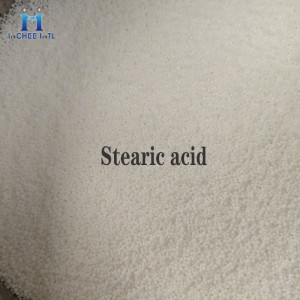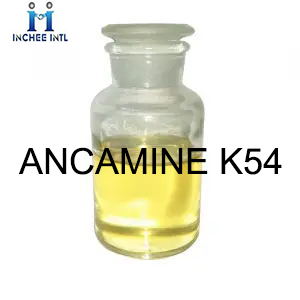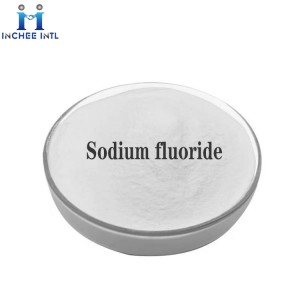Manufacturer Good Price Oleic acid CAS:112-80-1
Description
Its iodine value is 89.9 and its acidic value is 198.6. It is insoluble in water, but soluble in alcohol, benzene, chloroform, ether and other volatile oil or fixed oil. Upon exposure to air, especially when containing some impurities, it is susceptible to oxidation with its color turning into yellow or brown, accompanied with rancid odor. At normal pressure, it will be subject to decomposition 80~100 °C. It is manufactured through the saponification and acidification of animal and vegetable oils. Oleic acid is an indispensable nutrient in animal food. Its lead salt, manganese salt, cobalt salt belong to paint driers; its copper salt can be used as fish net preservatives; its aluminum salt can be used as the water repellent agent of fabric as well as the thickener of some lubricants. When being epoxidized, oleic acid can produce epoxy oleate (plasticizer). Upon subjecting to oxidative cracking, it can generate azelaic acid (raw material of polyamide resin). It can be sealed. Store it on darkness.
Oleic acid exists in the animal and vegetable oil fat in large amount, being mainly in the form of glyceride. Some simple oleic esters can be applied to the textile, leather, cosmetics and pharmaceutical industries. The alkali metal salt of oleic acid can be dissolved in water, being one of the main components of soap. The lead, copper, calcium, mercury, zinc and other salts of oleic acid are soluble in water. It can be used as dry lubricants, paint drying agent and waterproofing agent.
Oleic acid mainly comes from nature. Oil fat containing high content of oleic acid, after subjecting to saponification and acidification separation, can produce oleic acid. Oleic acid has cis-isomers. Natural oleic acids are all cis-structure (trans-structure oleic acid can’t be absorbed by the human body) with certain effect of softening the blood vessels. It also plays an important role in the metabolism process of human and animal. However, the oleic acid synthesized by the human body itself can’t meet the needs, so we need food intake. Thus, consumption of edible oil of high oleic acid content is healthy.
Synonyms
9-cis-Octadecenoicacid;9-Octadecenoic acid, cis-;9Octadecenoicacid(9Z);Oleic acid, AR;OLEIC ACID, 90%, TECHNICALOLEIC ACID, 90%, TECHNICALOLEIC ACID, 90%, TECHNICALOLEIC ACID, 90%, TECHNICAL;Oleic acid CETEARYL ALCOHOL Manufacturer;Oleic Acid - CAS 112-80-1 - Calbiochem;OmniPur Oleic Acid
Applications of Oleic acid
Oleic acid, Oleic acid, also known as cis-9-octadecenoic acid, being of chemical properties of single unsaturated carboxylic acid and is widely presented in animal and vegetable oils. For example, olive oil contains about 82.6%; peanut oil contains 60.0%; sesame oil contains 47.4%; soybean oil contains 35.5%; sunflower seed oil contains 34.0%; cottonseed oil contains 33.0%; rapeseed oil contains 23.9%; safflower oil contains 18.7%; the content in the tea oil can be as high as 83%; in animal oil: lard oil contains about 51.5%; butter contains 46.5 %; whale oil contains 34.0%; cream oil contains 18.7%; Oleic acid has a stable (α-type) and unstable (β-type) two types. At low temperature, it can appear as crystal; at high temperature, it appears as colorless transparent oily liquid with lard odor. It has a relative molecular mass of 282.47, relative density of 0.8905 (20 ℃ liquid), M.p. of 16.3 ° C (α), 13.4 ° C (β), boiling point of 286 °C (13.3 103 Pa), 225 to 226 °C(1.33 103 Pa), 203 to 205 °C (0.677 103 Pa), and 170 to 175 °C (0.267 103 to 0.400 103 Pa), the Refractive index of 1.4582 and viscosity of 25.6 mPa • s (30 ° C).
It is insoluble in water, being soluble in benzene and chloroform. It is miscible with methanol, ethanol, ether and carbon tetrachloride. Because of containing double bond, it can be easily subject to air oxidation, thus producing bad smell with the color turning yellow. Upon using nitrogen oxides, nitric acid, mercurous nitrate and sulfurous acid for treatment, it can be converted to elaidic acid. It can be converted into stearic acid upon hydrogenation. Double bond is easy to react with halogen to produce halogen stearic acid. It can be obtained through the hydrolysis of olive oil and lard oil, followed by steam distillation and crystallization or extraction for separation. Oleic acid is an excellent solvent for other oils, fatty acids and oil-soluble substances. It can be used for the manufacture of soap, lubricants, flotation agents, such as ointment and oleate.
Uses:
GB 2760-96 defines it as a processing aid. It can be used as antifoaming agent, fragrance, binder, and a lubricant.
It can be used for the manufacture of soap, lubricants, flotation agents, ointment and oleate, being also an excellent solvent for fatty acids and oil-soluble substances.
It can be used for the precise polishing of gold, silver and other precious metals as well as polishing in electroplating industry.
It can be used as analysis reagents, solvents, lubricants and flotation agent, but also applied to the sugar processing industry
Oleic acid is an organic chemical raw material and can produce epoxidized oleic acid ester after epoxidation. It can be used as plastic plasticizer and for production of azelaic acid by oxidation. It is the raw material of polyamide resin. In addition, oleic acid can also be used as pesticide emulsifier, printing and dyeing auxiliaries, industrial solvents, metal mineral flotation agent, and release agent. Moreover, it can be used as the raw material for manufacture of carbon paper, round bead and typing wax paper. Various kinds of oleate products are also important derivatives of oleic acid. As a chemical reagent, it can be used as a chromatographic comparative sample and for biochemical research, detection of calcium, copper and magnesium, sulfur and other elements.
It can be applied to biochemical studies. It can activate the protein kinase C in the liver cells.
Benefits:
Oleic acid is a fatty acid found in animal and vegetable oils. Oleic acid is a mono-saturated fat generally believed to be good for one's health. Indeed, it is the chief fatty acid found in olive oil, comprising 55 to 85 percent of the important substance, which is commonly used in Mediterranean cuisine and has been hailed for its therapeutic characteristics since antiquity. Modern studies support the notion of the benefits of consuming olive oil, since evidence suggests that oleic acid helps lower levels of harmful low-density lipoproteins (LDLs) in the bloodstream, while leaving levels of beneficial high-density lipoproteins (HDLs) unchanged. Found also in significant quantities in canola, cod liver, coconut, soybean, and almond oils, oleic acid can be consumed from a variety of sources, some of which may soon contain even higher levels of the valuable fatty acid due to the efforts of genetic engineers.
Oleic acid occurs naturally in greater quantities than any other fatty acid. It is present as glycerides in most fats and oils. High concentrations of oleic acid can lower blood levels of cholesterol. It is used in the food industry to make synthetic butters and cheeses. It is also used to flavor baked goods, candy, ice cream, and sodas.
According to the American Diabetes Association, more than 25 million Americans have diabetes. In addition, 7 million have undiagnosed diabetes, and 79 million others have prediabetes. In a study published in February 2000 in the medical journal "QJM," researchers in Ireland found that diets rich in oleic acid improved the participants' fasting plasma glucose, insulin sensitivity and blood circulation. Lower fasting glucose and insulin levels, along with enhanced blood flow, suggest better diabetes control and less risk for other diseases. For millions of people with diagnosed diabetes and prediabetes, consuming foods rich in oleic acid may be beneficial in controlling the disease.



Specification of Oleic acid
|
ITEM |
Specification |
|
Condensation point,°C |
≤10 |
|
Acid value,mgKOH/g |
195-206 |
|
Saponification value,mgKOH/g |
196-207 |
|
Iodine valu,mgKOH/g |
90-100 |
|
Moisture |
≤0.3 |
|
C18:1 Content |
≥75 |
|
C18:2 Content |
≤13.5 |
Packing of Oleic acid


900kg/ibc Oleic acid
Storage should be at cool, dry and ventilate.
















